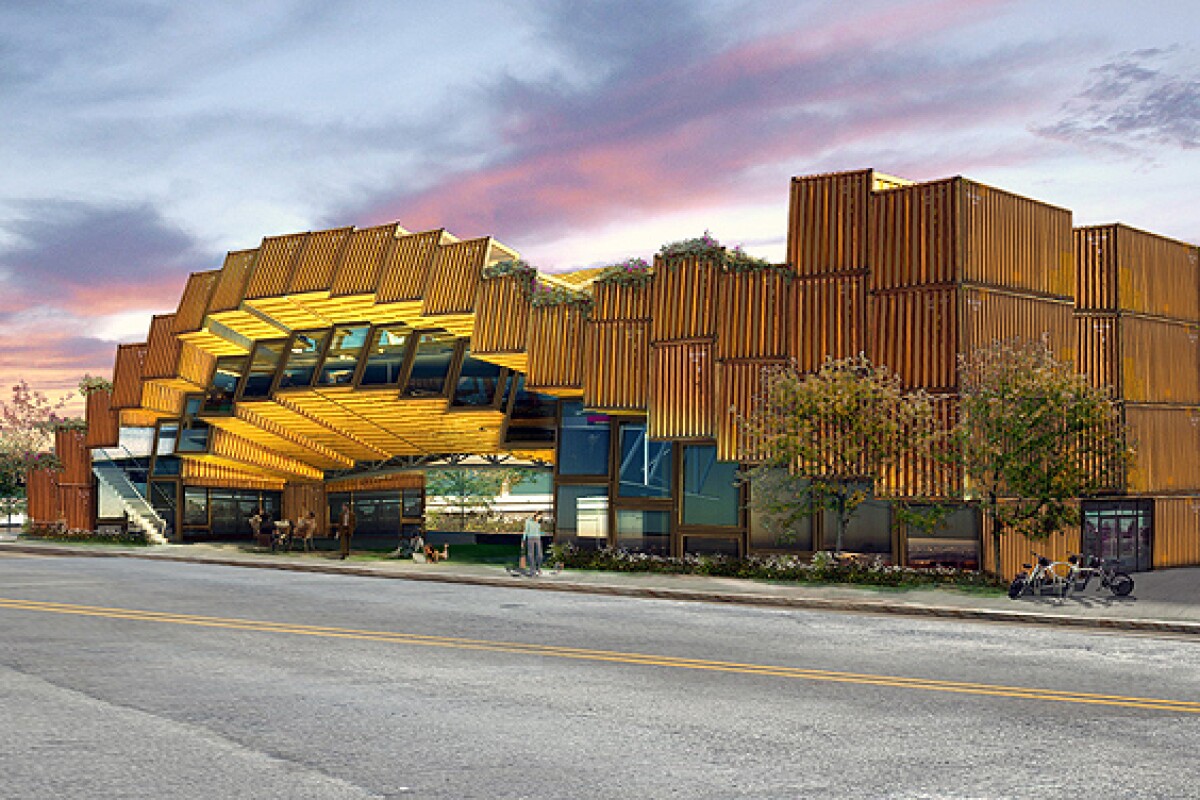Because they are sturdy, waterproof, transportable, and perhaps only a little bit smaller than some low-rent apartments, disused shipping containers have become very popular for conversion into low-impact buildings. Past efforts have included using them as emergency housing, trendy relocatable bachelor pads, and portable restaurants. Now, Los Angeles design group APHIDoIDEA has proposed putting 65 of the things together, to create an environmental education center for the city of Long Beach.
The eCORRE (Environmental Center of Regenerative Research & Education) Complex would provide the public with information on topics such as solar energy, water collection, interior daylighting, rooftop gardens, passive cooling techniques, and reuse of grey water. The building itself would consist of classrooms, offices, an exhibition hall, and a public plaza. On the outside, it would also feature an open amphitheater, and - practicing what it preaches - a rooftop garden incorporating a rainwater collection system.
In order to create the building, the shipping containers would first be stacked together in a two-row rectangle. The middle of that rectangle would then be raised up in an arch, to create the plaza underneath it. The two rows would then be separated, to allow access to the inside of the containers. Finally, the arched containers would be angled toward the Sun, to maximize solar gain - some of them would be glass-fronted.
It should be noted that while the outer shells of the containers would form the walls and roof of the complex, the rooms themselves would not all consist of single containers. That said, however, systems such as power and water could be contained within individual containers, and essentially "plugged in" to the complex.

The use of shipping containers is appropriate for Long Beach, as the city is home to the world's second-busiest port. While it's still not known if the eCORRE Complex will ever be built, APHIDoIDEA's design was a finalist in the U.S. Green Building Council's ETDC 2011 Emerging Talent Design Competition.
Source: Inhabitat









